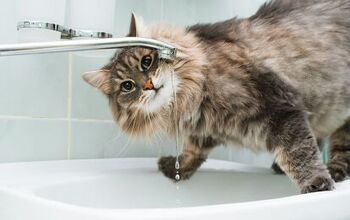Chipoo


About Chipoo
Chipoo Basics
Looking for a dog with a name every bit as adorable and his cuddly little appearance? Then you need a Chipoo in your life. An energetic and friendly little pup, the Chipoo is a great companion dog and loves to be part of a family environment. This pup not only soaks up attention and affection, he gives it back in spades. He loves to play, he’s quite intelligent, he’s considered easy to train due to his desire to please, and because of a tendency to bark when excited, he is an effective – albeit tiny – guard dog. He is also known to be quite independent, turning any space into his own personal play zone – including a small apartment – so lots of toys are a wise investment. In other words, this is a sweetheart of a doggo who can fit into just about any home. But, is the Chipoo the right pooch to bring home to your family? There’s only one way to find out! Keep your eyes glued to this page and scroll away. Everything that you could possibly want to know about the Chipoo is about to be revealed.
The Chipoo is a great companion dog and loves to be part of a family environment.
Origin
Similar to other designer dogs that have Miniature or Toy Poodle DNA running through their veins, Chipoos likely originated in the U.S. back in the 1970s. That’s about a decade after the first poodle-mix (the Cockapoo) came on the scene. The Chihuahua is thought to date back to an ancient civilization that lived in Mexico between the 10th and 12th centuries. Poodles are believed to have originated in Germany around the 13th century, while the more recent Toy variation came out of the U.K. around the 18th century. Unfortunately, there’s not much known about the history of the Chipoo beyond that. Like all designer dogs, there simply wasn’t much documentation kept about their history. No breeder has even claimed credit for being the first to breed Chipoos deliberately. Sadly, the history of designer dogs simply isn’t considered as important as that of purebreds.
Pedigree
Traditionally the hybrid Chipoo has been considered a designer dog because of a lineage that comes from two pure-breds that are recognized by the American Kennel Club (AKC) (the Chihuahua, which was recognized in 1905, and the Poodle, which was reconized in 1887). While the Chipoo is not a pure-bred and therefore not recognized by the AKC, it is by other groups (and under other names) such as the American Canine Hybrid Club (Chi-Poo), the Designer Dogs Kennel Club (Wapoo), International Designer Canine Registry (Chi Poo), and Designer Breed Registry (Choodle or Wapoo).
Food/Diet
Chi-Poos can have trouble digesting some of the ingredients found in typical generic dry dog food, so it’s important that he be fed a high quality version that is formulated specifically for small dogs. With a propensity for hypoglycemia (low blood sugar), this active little breed should also be fed several small meals throughout the day in order to avoid spikes and drops in blood sugar.
If you are ever concerned about either establishing or altering your dog’s diet, it’s always worth consulting with a veterinarian. While dog food manufacturers and pet blogs provide useful feeding guidelines, they are still only guidelines and won’t necessarily apply to every dog. All dogs are different after all, each with their own needs. The only person qualified to determine the specific dietary needs of your personal pooch is their vet. So, always rely on the expertise of a good veterinarian to ensure that you are meeting the nutritional needs of your pup.
This bright little breed is keen to please their owners.
Training
This bright little breed is keen to please their owners and like most dogs, positive reinforcement and lots of praise go a long way in getting the results that you want. Relying on punishment and negative reinforcement is far closer to abuse than training and should be avoided at all costs. Training should also begin at a very young age. Those early and impressionable puppy days go by quickly, so make sure to start training early and often to avoid your Chipoo developing the dreaded “small dog syndrome.” Like many small dogs, house training can be a challenge, so be prepared to devote some time to this activity. And Chipoos can become possessive of their toys so early socialization is important. A stubborn streak can also present early on, so careful monitoring and regular coaching may be necessary. If training proves to be a challenge, enrolling your pooch in puppy school is always a wise idea. Not only will the professional trainers be able to handle any dog, but it’s also an opportunity to start socialization at a young age as well.
Weight
Chi-Poos can range from as little as 3 pounds to as much as 20 pounds depending on whether the “poodle side” of his family was a Miniature or a Toy poodle. Similarly, heights can range from 5 to 15 inches, based on the type of poodle used in the breeding.
Temperament/Behavior

Sharing space with three seriously judgy Schnoodles and a feline who prefers to be left alone. #LivingMyBestLife
More by Mary Simpson
























